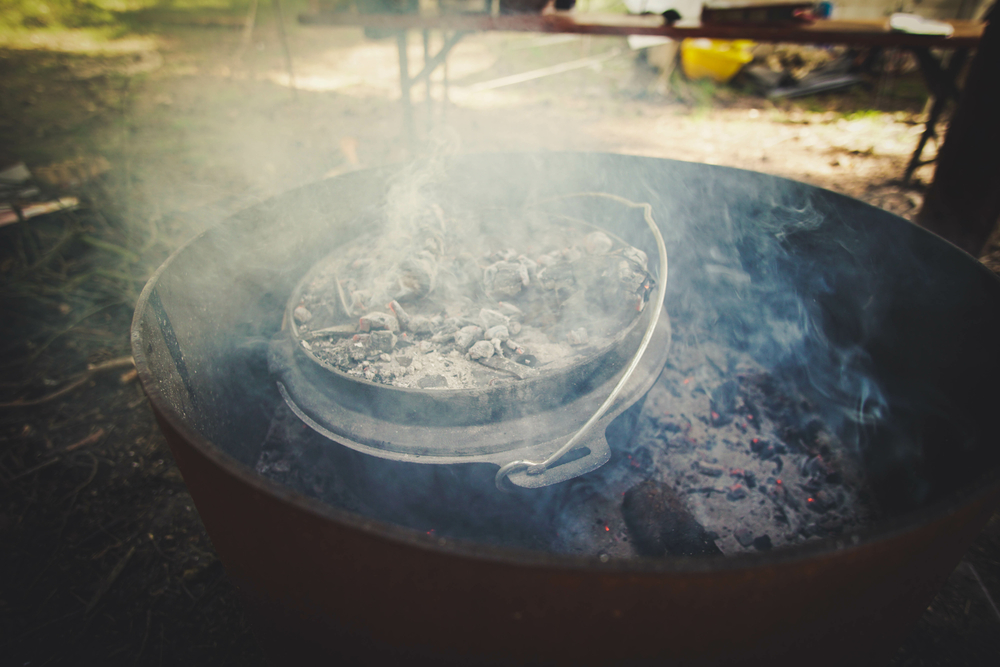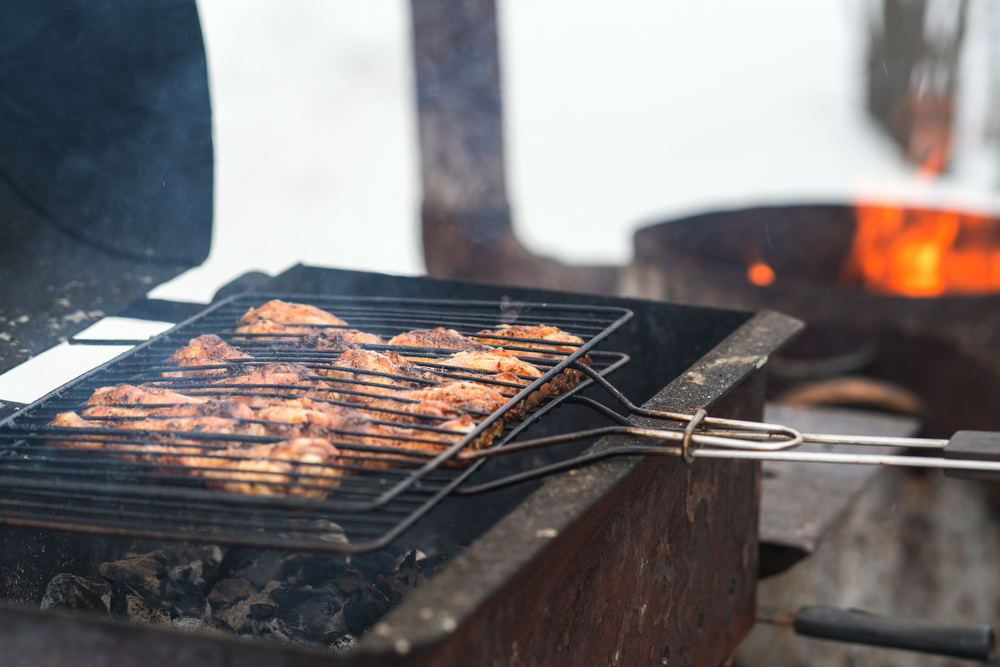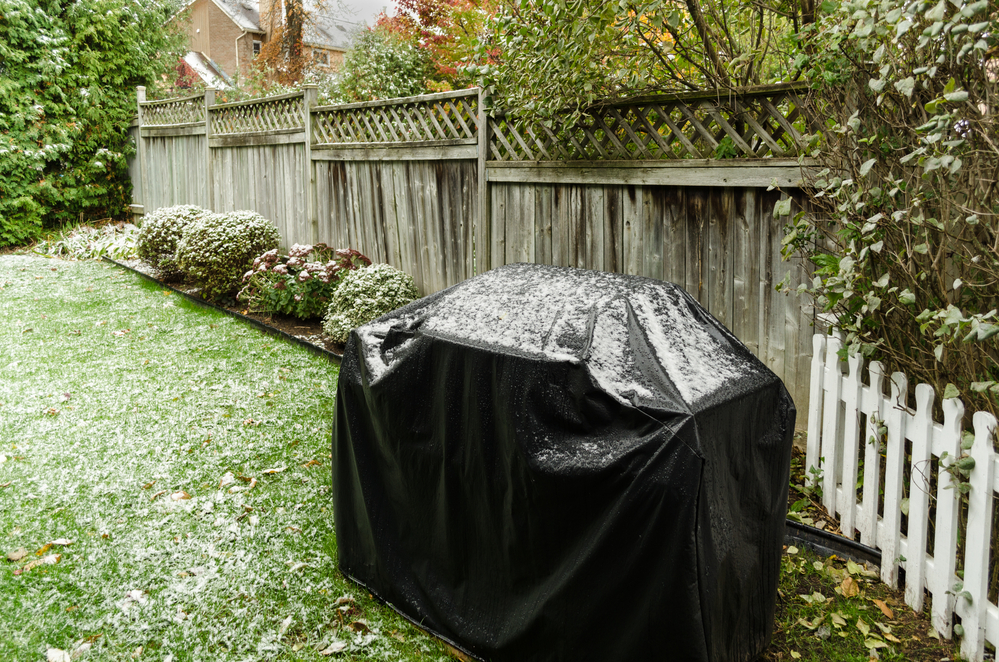We are slowly bidding farewell to autumn, as the winter weather with sweaters is upon us. By this time of year, everyone is already winterizing their gardens, but it’s not time to put away the barbecues just yet. It’s worth organizing your garden and home so that you have more alternatives for relaxation. November may even bring milder days when a little BBQ in autumn in the garden can lift the family’s spirits. Let’s see how to barbecue safely in the cooler months.
It is now possible to organize barbecues on the patio or in the courtyard for a few more weeks. But before you get out the tools and start the fire, make sure your equipment is not in need of cleaning and repair.
Since the grill and its accessories are stored in the shed, garage or workshop, dust will stick to every small part and surface over time. Of course, this is not the only reason to clean grills, covers and all other accessories. Just think of the animals that might have climbed on the tools stored outside, trying to get at the fallen or burnt pieces. And last but not least, any burnt or stuck-on food residue should be removed from the grates and plates, as this is a prime hygiene concern before you start cooking. If you want to cook on perfectly shining grids, we’ve already given you some tips on how to clean them properly.
Winter barbecue – how to get started?
Although barbecuing in winter may seem like a slightly unusual idea, it’s just as enjoyable as on hot summer days. Grilled hot food can be particularly good in the cold. Following a few simple tips will make your barbecue a success, even when the first snow begins to drizzle.
When barbecuing in winter, it’s important to remember to dress warmly and it’s handy to keep everything handy in the bruising garden. The journey between your warm home and the barbecue will seem much longer in winter than on a warm summer evening.
All you need for the perfect winter barbecue is the right equipment and a little patience. In cold weather, for example, it takes about a quarter as long to cook. Also, bear in mind that you will need more charcoal or gas than you are used to in the summer months.
Also, low temperatures will take a different kind of toll on your barbecue, so you will need to pack it away after cooking. You can read about the latter in our last tip.
Choose the right grill for a BBQ in Autumn
In winter, you can basically grill on any barbecue. Even in cold weather, it is mostly a matter of personal taste whether you use a charcoal, gas or electric barbecue. See below for the differences between the appliances:
Gas grill:
- Quick to heat up
- Easy temperature control
- Requires prior knowledge
If you want to finish cooking quickly, it’s best to use gas. At a temperature of 1472 °F, the meat will cook through and crisp up very quickly. However, it is important to use the right gas. Butane gas becomes liquid at just below freezing point and does not evaporate, making it difficult to fire up. Propane gas only becomes liquid at -43 °F, so it is good for all seasons.
Electric grill:
- Heats up quickly and maintains a constant temperature
- Low smoke production, can be used on balconies
- Difficult to move as it requires a power connection
Even die-hard charcoal lovers will have to admit that the benefits of an electric barbecue are particularly good in sub-zero temperatures. It heats up quickly and maintains its temperature without any preparation. Those who miss the smoky smell of grilling should know that it depends only on the temperature, not the fuel. So with a powerful electric barbecue, you can cook delicious meals all year round.
Charcoal grill:
- Also a little warming
- Affordable
- More charcoal is needed in winter
Smoke and “real fire”: it’s no coincidence that there are so many fans of charcoal barbecues. In winter, however, it’s a bit more work to use them. The low temperatures outside mean you have to load up more often. For this reason, it’s better to opt for more expensive charcoal with a higher calorific value.
Dutch oven
The Dutch oven may be most familiar from old westerns. However, the cast iron pot is also good for barbecuing without the romance of a Wild West campfire. Whether placed on the glowing charcoal or on the grill, it is a very useful accessory, especially for winter grilling.
The heavy, snug-fitting lid allows hardly any air to get in, but the steam doesn’t escape, so you can cook almost anything: one-dish meals, roasts, punch and even baked goods. The thick cast-iron walls retain heat for a long time and release it evenly. The shape of the lid is such that you can even put charcoal on it, so it can be used for the top and bottom baking.
As the Dutch oven can be very hot, it is a good idea to wear ovenproof gloves and have a fireproof plate ready.

Choosing the right ingredients and keeping them warm
The winter cold not only affects the barbecue and the atmosphere but also requires special considerations when choosing ingredients. In general, it’s a good idea to buy foods that cook at low temperatures, such as fillets, thinner meats, sausages, vegetables or seafood.
If the barbecue has a side burner, you can use it to keep the food warm, which is advisable in sub-zero temperatures. Set the temperature to a low setting and be careful not to overcook meat and fish. Instead, you can wrap your food in aluminum foil to keep it warm.
You can also use the side burner to keep side dishes such as potatoes or soup warm in a casserole dish. You can even grill vegetables or meat on skewers on the side of the grill.
How to have the perfect barbecue in autumn and winter
Just think, never before has a hot baked potato warmed our hands as pleasantly as now, in the winter! A good glass of homemade brandy or mulled wine, steaming rum liqueur, punch, grog, and all kinds of warm drinks, even without alcohol (hot chocolate, tea, etc.), can provide internal warmth.
It’s much more comfortable to have a barbecue in the garden, of course, but it’s still a good idea to have the party during the day, although it’s still cozy to be wrapped up in warm blankets near the fire after dark.
Set up a gas cylinder heater to keep the atmosphere cool. Placed next to the seating area with cushions and blankets, it will provide warmth and comfort.
Sitting on the beer benches set up in the gazebo next to the barbecue, your guests won’t feel cold and the master baker won’t be left out of the conversation.
A pizza with toppings of your choice will please everyone! Ask your guests to help you make it and add the toppings themselves. All you need is a good pizza stone.
Even have room for a fire pit in your garden? If so, try bread on a spit! This bread is not only great as a side dish but also as a dessert when enriched with chocolate chips or marshmallows. Bread on a spit is an ideal community builder and will be enjoyed by young and old alike.
Use easy-to-grill ingredients
Barbecues are extremely versatile pieces of equipment that can be used all year round, especially this time of year when we are all at home more. However, when grilling outdoors in colder weather, it’s a good idea to steer clear of ingredients that can take longer to cook. Examples include thick steaks. Cooler temperatures mean that the grill doesn’t retain heat as well as it does in hot weather. This is why it is recommended to grill fish, chicken, vegetables and sausages. You can’t go wrong with these.

Side dish roasted in embers
Potato! Scrub nice, evenly sized potatoes, cut a cross shape in the middle, and place on the coals in aluminum foil. A little butter and salt – nothing else is needed.
Expect longer cooking times
When grilling outdoors, expect slightly longer cooking times in cool weather. If it is cold outside, you will need to use more charcoal than usual. It is also important to preheat the grills so that the meat can cook through more quickly and thoroughly.
Safety first
Fire prevention is important not only in summer but also in the cold seasons. It may be tempting to take the barbecue into the garage when it’s cold or raining, but don’t do it – even if the garage door is open. Anything can easily catch fire near the barbecue, not to mention the resulting smoke, which can also be dangerous in an enclosed space. For this reason, keep plenty of distance from the home or garage and ensure that small animals and children cannot get near the barbecue. It is advisable to keep extinguishers within reach!
After the grill party
After a pleasant evening, the barbecue should be wrapped in its winter-proof packaging again. First, however, it must be cleaned. First remove grease, soot, and other dirt with a scrubbing sponge or wire brush. Charcoal grills are particularly prone to soot build-up, so it is a good idea to soak the grill in warm soapy water first and then wipe it with a cloth.
For gas grills, simply burn off the residue thoroughly. Grease and other dirt will be enough and can be easily removed with a brush after cooling.

Once you’ve cleaned the grill, find a suitable place to store it for the winter. It is best to put it in the tool shed or garage. If you have no way of doing this, cover it with a water-repellent tarpaulin. Be sure to protect the whole barbecue and secure the tarpaulin securely so it doesn’t blow away.
In winter, it’s a good idea to disconnect the gas cylinder from the barbecue and screw on the protective cap that comes with it. You can leave it outside for the winter, but it’s best to store it indoors. If you do store it indoors, make sure it is adequately ventilated.
Last updated: September 24, 2023


